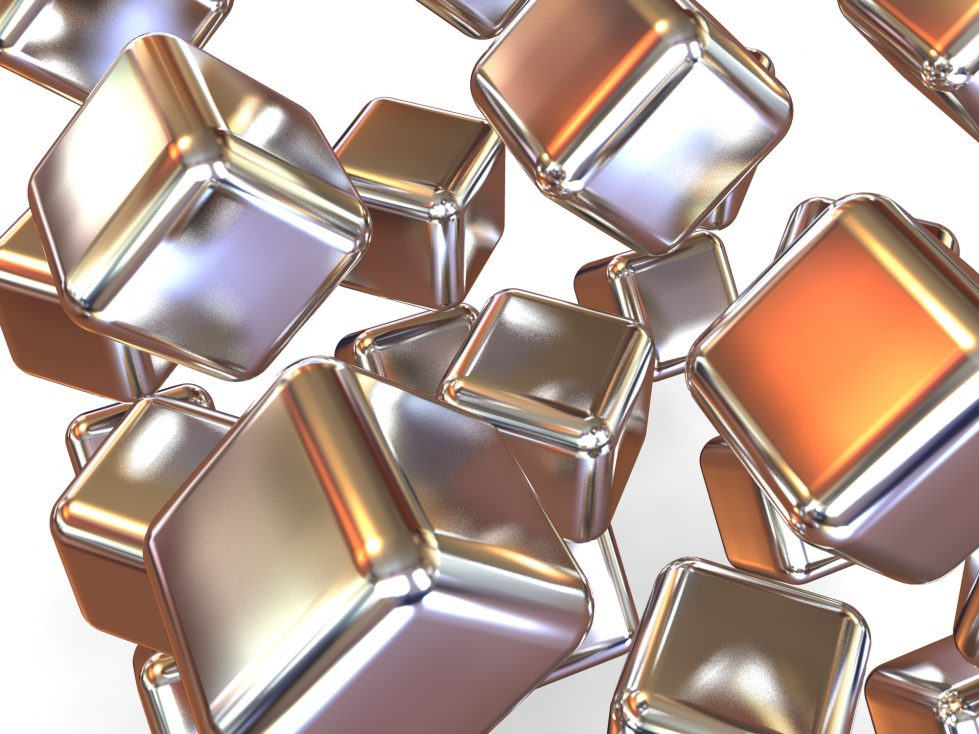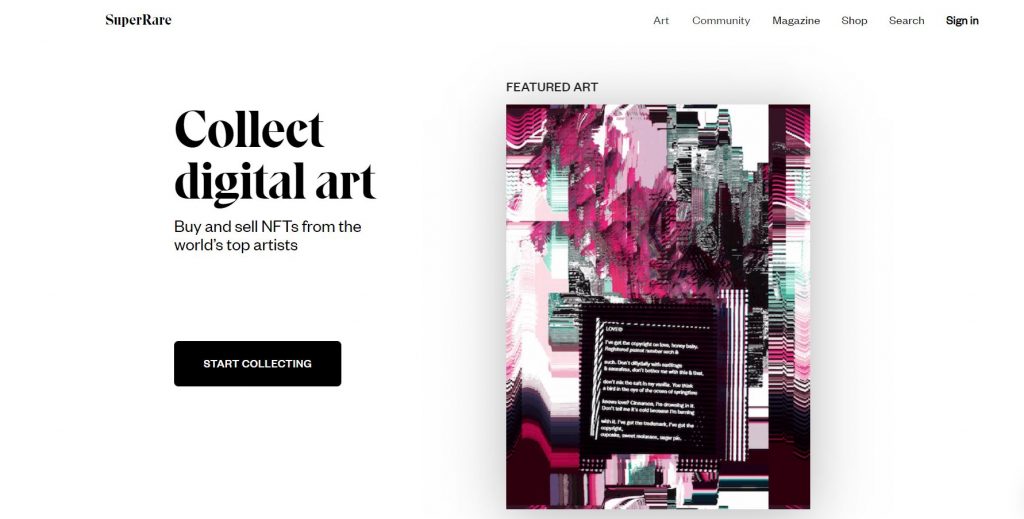A Must-Read Guide to NFTs: What is It and How You Can Buy One to Help Ukraine
Creative tech is powering the market nowadays, pushing brands to create innovative projects that will challenge competitors, wow consumers, and provide them with unique experiences. A large part of this market is occupied by non-fungible tokens (NFTs), which have revolutionized the concept of digital ownership and are pushing creative boundaries.
Non-fungible tokens have also transformed people’s perception of the arts, finance, and technology. And even though NFTs are more of a niche field, many turn to them as they resonate with audiences across the world, or even bring attention to global challenges and events.
In the case of a recent Depositphotos charity project— the Revival Project—NFTs are helping restore destroyed cultural heritage in Ukraine, while also drawing attention to an important topic. Since the beginning of the war in Ukraine, russian occupiers have damaged over 450 cultural objects. Therefore, in this article, we want to break down NFTs for you and teach you how to buy one, so you can help Ukraine, return millions a feeling of home, and also become a digital art owner.

What is an NFT?
A non-fungible token (NFT) is a unique blockchain-based digital asset that is linked to a particular digital or physical item and cannot be exchanged or traded in the same way as other cryptographic assets. Owning an NFT is the same as owning a digital certificate (token) that contains all the information about the item, including the creator, date of creation, buyer, date of purchase, price, and current owner.
The ownership of a non-fungible token can be easily verified on the blockchain, minimizing the likelihood of fraud. Most often, NFTs are used to sell digital art. However, they can also be used for charity projects, real estate, fashion items, event tickets, and video game collectibles.
Although many perceive NFTs as aesthetically pleasing digital assets, they can also be used for important initiatives. For example, the META HISTORY museum uses NFTs to document how the war in Ukraine has been unfolding to preserve the truth. The Revival Project, which is also presented on the platform, uses NFT artworks by local artists to share their unique vision of the future of Ukraine’s cultural heritage, tell site-related stories, and raise funds.
What are crypto exchanges?
A crypto exchange is an online platform that facilitates the trading of cryptocurrencies for other crypto assets, such as digital and fiat currencies and NFTs. The popular ones are Coinbase, Binance, Gemini, and others.
You can use exchanges to convert one crypto to another, such as Bitcoin to Ethereum, or to buy crypto with fiat currency, such as Euros or US dollars. You can also convert cryptocurrencies back to regular money.
Crypto exchanges work like a brokerage and provide many services, such as issuing and holding your public and private keys, securing your account’s access to the cryptocurrency, and providing support for your account.
What is an NFT marketplace?
An NFT marketplace is an online platform for selling, buying, and exchanging non-fungible tokens. It connects NFT creators with art collectors, brokers, and investors. Users of most NFT marketplaces can mint*, store, display, and sell their digital assets on the platform in exchange for cryptocurrency or real money. Typically, the platform handles all transactions and transfers of NFTs for a small fee.
NFT trading platforms usually occupy a niche in order to appeal to specific audiences and stand out. SuperRare NFT platform, for example, specializes in unique and single-edition digital assets. At the same time, META HISTORY brings crypto experts and top-notch artists together to highlight and document the war in Ukraine through NFTs.
NFT marketplaces, like any other marketplace, vary in terms of assortment, blockchains, payment options, fees, etc. Usually, most of them fall into one of the following two categories:
- Open marketplaces are free for anyone to join, sell, buy, trade, or mint NFTs. They accept NFTs of different types, styles, quantities, prices, and features.
- Closed marketplaces are more exclusive, and artists should apply or get an invitation to present their works on the platform. NFTs are often curated here, with additional restrictions on selling and trading.
*NFT minting is the process of transforming digital files into digital assets that are stored on the blockchain.
Popular NFT marketplaces worth knowing
1. META HISTORY

META HISTORY is an NFT museum created by the Ukrainian crypto community and supported by the Ministry of Digital Transformation of Ukraine. Its mission is to preserve the memory and history of current events in Ukraine, spread truthful information about the war, and raise funds for humanitarian aid. META HISTORY transfers all proceeds to Ukrainian ministries and volunteer funds that work to restore Ukrainian museums, theaters, and cultural objects damaged by russian occupiers.
The museum’s website also showcases NFT artworks made by Ukrainian creatives as part of the Revival Project, which helps to preserve and revive Ukraine’s culture.
2. OpenSea
OpenSea is one of the oldest, largest, and most known NFT marketplaces. You can find a wide range of NFTs on the platform, from digital art, music, and sports collectibles to trading cards, domain names, and virtual worlds. The core currencies on OpenSea are Ethereum, Solana, USD Coin, and Dai. But keep in mind that the platform doesn’t accept non-crypto currencies, such as USD, EUR, or GBP.
OpenSea is convenient for beginners as it’s user-friendly, doesn’t charge anything to sign up, and allows users to create NFTs on the platform.
3. SuperRare

SuperRare is a gallery-like NFT art marketplace that focuses on unique and single-edition digital artworks. The platform has strict curation criteria, resulting in an authentic and rare selection of NFT art pieces tokenized as crypto-collectible digital items. All transactions on SuperRare are made using Ether, the native cryptocurrency of the Ethereum blockchain.
SuperRare also has an editorial blog featuring Q&As, SuperRare’s top picks, and the platform’s new artists.
4. Rarible
Rarible is a community-driven NFT marketplace where users can buy, mint, and sell NFTs across multiple blockchains, such as Ethereum, Polygon, Solana, Flow, and Tezos. The beginner-friendly platform offers digital art, photographs, and video game collectibles. It is similar to OpenSea, but you can also pay with a credit card in addition to using a crypto wallet.
Rarible has created its own token called RARI, and its holders have the right to vote on various business decisions, such as platform improvements and policy changes.
5. Binance NFT

Binance, one of the world’s largest cryptocurrency exchange platforms, began selling NFTs in 2021 through its own platform called Binance NFT. It offers one of the lowest transaction fees on the market (1%) and features NFT art collectibles, in-game items, and virtual land. The marketplace runs on its own blockchain and has issued its own coin – Binance Coin (BNB) and Binance USD (BUSD) – a stablecoin with 1:1 USD support. In addition to BNBs and BUSDs, Binance NFT also accepts Ether.
Binance NFT also features Mystery Box – a set of random non-fungible tokens that can be purchased at a fixed price and contain rare and valuable digital assets.
6. Nifty Gateway
Nifty Gateway is the premier NFT marketplace that hosts the most expensive and exclusive digital items. It focuses on artworks from top celebrities, famous artists, and brands. Although the platform hand-picks content for sale, it still provides a diverse range of art and collectible NFTs. Nifty Gateway is easy to use and ideal for newcomers as it accepts both Ethereum cryptocurrency and credit cards.
Nifty Gateway is on a mission to make NFTs available to everyone and to turn 1 billion individuals into NFT collectors.
How to buy an NFT
To start buying non-fungible tokens that can change the future for the better and contribute to the community, you will need digital currency, a crypto wallet, and an account on a crypto exchange platform and NFT marketplace. Let’s get started!
1. Open a crypto exchange account
In order to start buying and selling cryptocurrencies, you must first open an account with a crypto exchange platform. Many people confuse crypto exchanges and NFT marketplaces since they have some similarities. However, we’ve already covered both terms at the beginning of the article.
2. Open a crypto wallet
The next step is to create a crypto wallet. Two standard cryptocurrency wallet options are Coinbase Wallet and MetaMask. But plenty of other wallets are available, including WalletConnect, Electrum, Exodus, and many more.
Cryptocurrency wallets store your public and private keys, securing your digital assets. They allow you to send, receive, and spend various cryptocurrencies. The process of creating a crypto wallet is straightforward and will not take long.
3. Purchase Ethereum
Because most NFTs are built on the Ethereum blockchain, it is preferable to purchase its native coin – Ether or ETH. It is available for purchase on crypto exchanges.
4. Transfer your cryptocurrency to a crypto wallet
It’s time to transfer your digital money to your wallet after you’ve chosen an exchange, bought cryptocurrency, and created a wallet. The procedure may vary depending on your exchange platform, wallet, and marketplace of choice.
5. Connect your crypto wallet to the NFT marketplace
Once you’ve created an account on the NFT marketplace, connect your wallet to it. Then you can browse, buy, and sell NFTs, as well as subscribe to NFT drop announcements and new digital collections.
How to help Ukraine by purchasing NFT art
On the eve of Ukraine’s Independence Day (August 24), the Depositphotos team, which consists of many Ukrainians, presented a new thematic project dedicated to cultural sites in Ukraine that were destroyed by russia.
In collaboration with seven local, independent artists, they created 38 charity NFT artworks that envision how destroyed objects might look in the future. In addition, the creatives shared their personal site-related stories since they all have a special connection with these cultural objects.
All artworks are available for multiple purchases on the META HISTORY museum website. The project is also supported by the Ministry of Culture and Information Policy of Ukraine, and all funds collected will be transferred to their crypto wallet. Don’t miss an opportunity to acquire a one-of-a-kind digital asset with a powerful mission behind it!
Buy NFTs to support Ukraine’s culture
Bottom line
There are several reasons why you might be interested in purchasing NFTs. Some want to keep up with the times and invest in something that increases in value; some aim to trade and make a profit; while others want to display it in their home, gallery, or the Metaverse. Whatever your goal is, we hope this guide has helped you better understand the NFT field and will make future purchases easier.
Check out other related articles:
What Opportunities Does The Metaverse Open for Business? NFT Auctions and Virtual Stores
Generating Music with AI: How it Works
Covering The War: Interview With Photojournalist Christopher Occhicone















